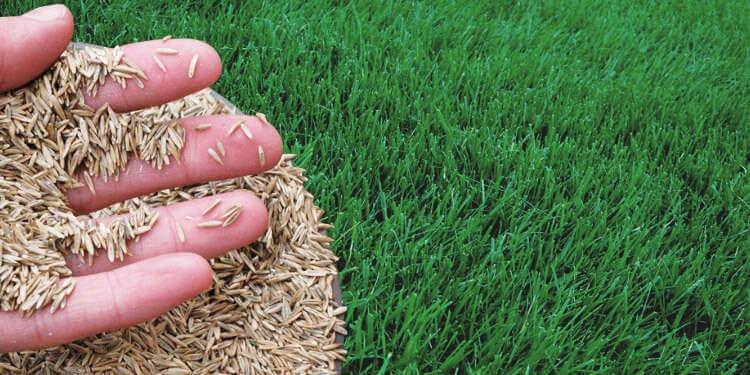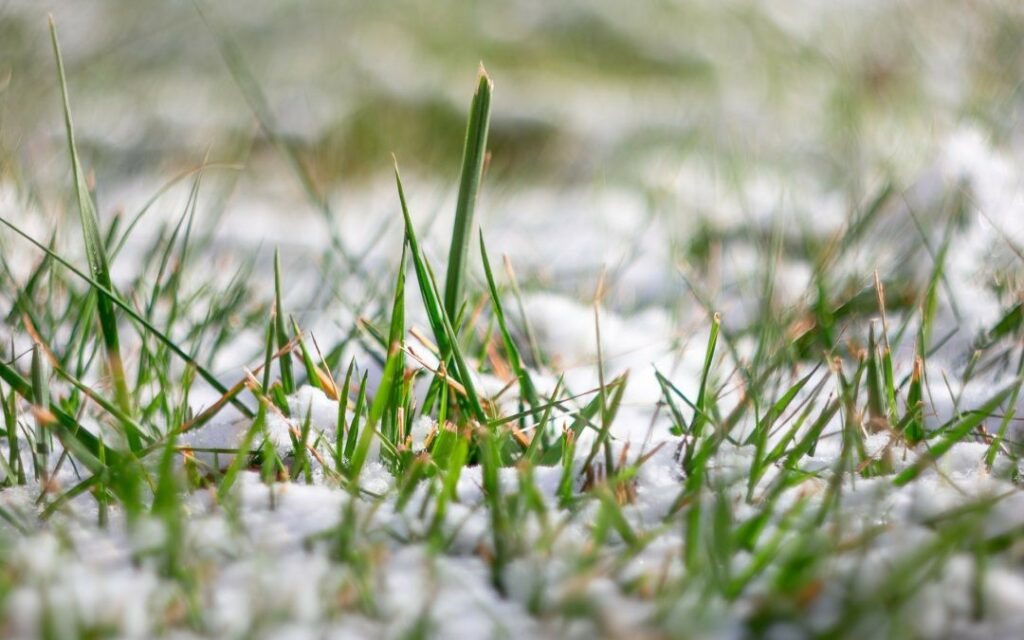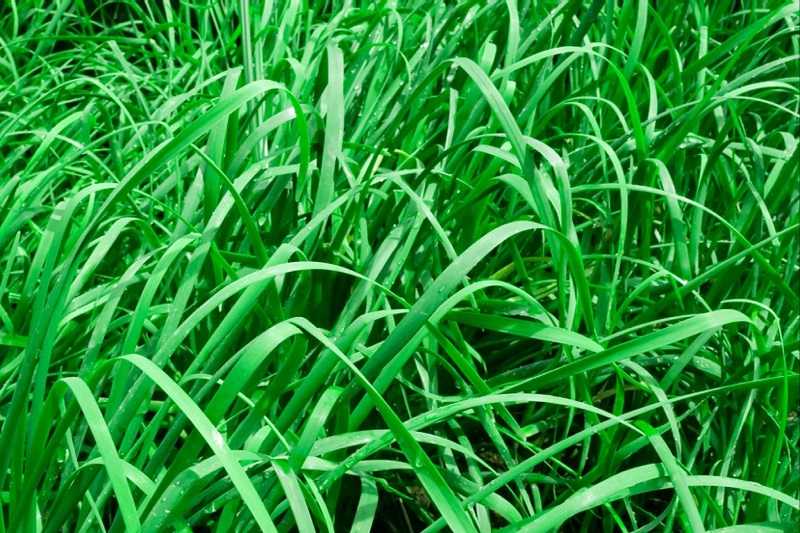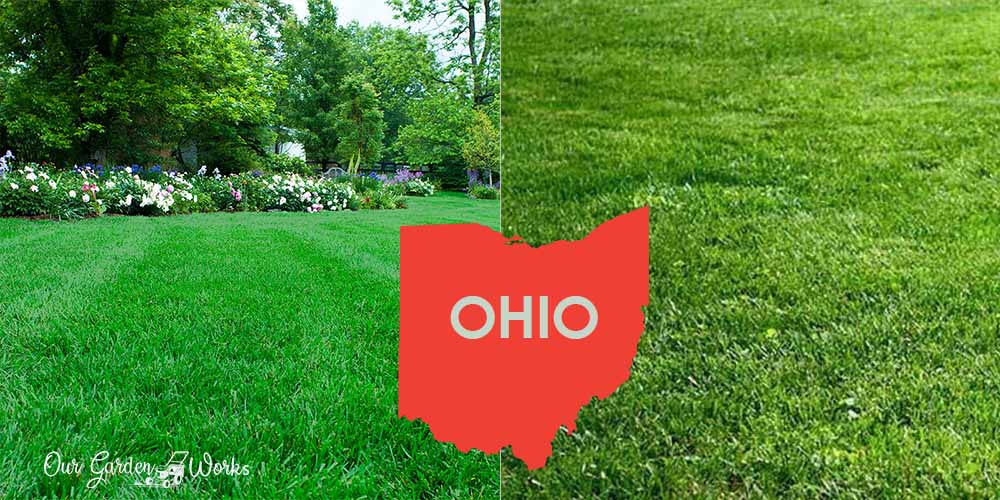Due to its location, many gardeners like you are probably wondering when to plant grass in Ohio. It is among the northernmost states in America, sitting at the border facing Canada.
Unlike other states, it has a continental climate. So, gardening can be a little bit rough if you come from warm parts of the country.
The outdoor temperature and seasons impact the proper growth of grass. Your location is a crucial determining factor to know the amount of rain and heat that your plants will receive throughout the growing period. So, it pays to consider the climate in your location in Ohio before you seed your lawn.
Due to its geographical location, Ohio is open to the cold and dry fronts from Canada and warm air from the Gulf of Mexico. The constant merge of two contrasting temperatures from these locations causes frequent rainfall to the state that averages about 40 inches every year.
The snow during winter can reach up to 20 inches per year. However, the northeastern part of Ohio receives more snow resulting in 100 inches of snow per year.
So, your approach to gardening might be a bit different if you live in the northern part. Now, let us dig in on when is the best time to plant grass seed in Ohio.
Seeding Grass In The North: When To Plant Grass In Ohio?
The ideal time to plant grass and seed your lawn in Ohio is during a rainy day in late summer or early fall.
The moist soil during the rainy days of early fall reduces your need for irrigation and is warm enough for the seeds to germinate. Late summer is ideal because the peak of the summer heat has passed, and the rainy season has come to water your seeds naturally.
The summer heat peaks early in some parts of the state, mainly in northern Ohio. It is best to avoid the peak of summer to protect the growing seedlings from the extreme outdoor temperatures.
If you’re in the northern part of the state, seed your lawn between mid-August and mid-September. On the other hand, you can seed your lawn any time during September if you are from the southern part of Ohio.
Though summer and fall are ideal for seeding, some gardeners perform other seeding techniques to cultivate the lawn during different seasons.
If you miss seeding your lawn in August or September, you still have a chance by planting them in early spring and late fall.

Different Seeding Techniques in Seeding Your Lawn in Ohio
Many gardeners and landscape artists know how to work around the seasons in Ohio to maintain lush green lawns and gardens. These techniques include spring seeding and dormant seeding.
Learn more about them below:
#1 Spring Seeding
Spring is the season when most gardeners gather up their gardening tools and start cultivating soil after months of snowfall and winter. However, seeding your lawn mid-spring may fail your goal of growing a lush garden.
Grass seeds take about 30 days to germinate. By the time the seedlings sprouts from the ground, the harsh summer heat and dry weather may kill them eventually. They will also be competing with the weeds that grow in spring.
Seedlings are at the stage of growth wherein they are not yet strong enough to endure periods of drought and heat stress.
If you wish to seed your lawn during spring, you must do it early in the season to allow the seedlings to be established before summer comes.
In Ohio, April is the best month to seed your lawn to get a high chance of germinating them early enough before the heat of summer comes.
When to overseed lawns during spring in Ohio?
Overseeding is the process of planting new grass seeds on an existing lawn. You may also start overseeding your lawn in early spring to help the new seedlings be established ahead of the harsh summer weather.
If possible, it is best to wait until early fall to be overseed, so that the seedlings will have several months to develop before becoming dormant in winter.
For the next growing season, the roots of the seedlings will develop further as soon as the soil temperature warms up and reaches 55°F.
#2 Dormant Seeding/Winter Seeding

While most garden works begin in spring when the growing season begins, you can also plant grass and other plants before the first frost.
To speed up the growth of grass, you may sow them in the ground when the soil has started to cool down and reach 40°F.
The grass seeds planted in cold soil will not germinate immediately and become dormant until the next spring. As soon as the ground starts to warm up during the spring season, the seeds will begin to germinate and develop before summer.
If you plan to try this technique in Ohio, you should start seeding by mid-November (Nov. 15) for northern Ohio and December 1 in southern Ohio.
The only thing about doing dormant seeding is the risk that comes with it. When the weather changes in an instant and warms up in the middle of winter, the seeds may start to germinate prematurely and die due to inappropriate growing conditions during winter.
If you notice that you are experiencing mild winters and inconsistent snows in your area, then winter seeding may not be suitable for you. Oftentimes, these weather conditions mostly happen in southern Ohio and rarely occur in the north.
How Long Will It Take For My Grass Seeds To Grow?
If you’re new to gardening, you are probably wondering why you need to take so much effort in scheduling your seeding.
Well, it all roots to the germination time that grass takes to sprout into a seedling. Like other plants, they take time to develop, which is around 5 to 30 days at maximum.
The germination period depends on the variety of grass that you choose. So, before buying any seeds, pay attention to their germination period so you can schedule the seeding correctly.
When Is It Too Late To Plant Grass in Ohio?
Usually, it is too late for you to plant grass when it’s mid-spring to mid-summer. The seeds may germinate, but the seedlings will not be strong enough to protect themselves from the harsh summer sun.
The best times for seeding in Ohio only lie around the earliest time in spring, late summer to early fall, and late fall for winter seeding.
Types of Grass That Grows Well in Ohio
Before seeding, every gardener must choose a variety of grass that goes well with the climate in their region.
Ohio belongs to the upper two-thirds of America where cool-season grasses are grown by the majority. However, warm-season grasses can also thrive in the northern region during warm seasons.
Warm-season grasses grow well during the warm seasons of spring and summer when the temperature ranges between 80ºF to 95ºF. The cool-season grass will thrive more in Ohio and are usually lush in areas with temperatures ranging from 65ºF to 75ºF.
Deciding based on aesthetics is pretty common among new gardeners. However, no consideration of the difference between cold and warm-season varieties will only cause frustration.
Here are some of the options that you can choose when planning to grow your lawn in Ohio:
Cold-season Grasses
Cold-season grasses are well-adapted to winters. They are the best options in regions with temperatures ranging from 60 ºF and 70 ºF. Cold-season grasses also do not go dormant during winter, unlike warm-season grasses.
Varieties under this category include:
Kentucky Bluegrass

Kentucky Bluegrass is among the varieties of grass that provide a fine and uniform texture in most lawns in Ohio. It is a popular cool-season grass that has high resistance to foot traffic and fungal diseases. It takes about one to three months to establish and be strong enough to withstand environmental stress like drought and heat.
Kentucky Bluegrass grows best in direct sunlight and has an aggressive spreading habit. Its charms lie on its dark green leaves that cover your lawn. It grows well either in the shade and direct sunlight and can cover up bald spots in your lawn in no time. Its germination period takes about 14 to 30 days after planting.
Every variety of grass has its own set of cultivars. For Kentucky Bluegrass, there are 11 popular cultivars which include:
- Total Eclipse
- Tsunami
- Midnight
- Monopoly
- Preakness
- Eagleton
- Avalanche
- Goldstar
- Challenger
- Shamrock
- Kenblue
Perennial Ryegrass

Another cold-season variety is Perennial Ryegrass. It is a popular choice for most sports fields and playgrounds due to its resistance to heavy traffic.
Unlike Kentucky Bluegrass, it does not spread and is categorized as a bunch-type grass. Its germination time is also shorter, ranging from five to ten days after planting.
The fine-bladed texture of Perennial Ryegrass is mostly distinguished in a lawn due to their white tips after mowing. Some gardeners use them for erosion control since they are one of the easiest varieties of grass to germinate.
Perennial ryegrass becomes dormant during warm seasons and flourishes back to life during fall and winter. They are often used as wintergreen with some warm-season varieties, so homeowners can achieve all-year long green lawns.
Common problems with this variety are they have a lower tolerance to drought, heat, and shade.
Fine Fescue

Fine Fescue is a sturdy variety of cool-season grass that has thinner and finer leaves. It germinates faster than other cold-season grass ranging from four days to eight days. Most gardeners love it since it blends well when mixed with other varieties of grasses.
The best quality of Fine Fescue is it is the only grass that can adapt in shade all day. It also does not require too much irrigation to remain lush green. It should be kept at a height of three inches for best results. Cultivars of Fine Fescue include:
- Creeping red fescue
- Chewings fescue
- Sheep fescue
- Hard fescue
Fine fescue grows fast and has a unique gray-green color. It is more drought, shade, and cold-tolerant than other varieties but may not be as heat and foot-traffic tolerant as Perennial Ryegrass.
Tall Fescue

Tall Fescue is a bunch-type grass developed by seed companies to provide the balance between the extra Fine Fescues and Kentucky Bluegrass. It has a deep root system that makes it a perfect turfgrass. It is a popular option in the Transition Zone where heat and drought tolerance is more required.
Popular types of Tall Fescue are as follows:
- Southern Gold® Mix (survives extreme weather conditions)
- Kentucky-31 tall fescue
- Heat-Tolerant Blue® Mix
Tall fescue is engineered by seed companies to provide several features that make it suitable for cold, warm, and transition zones. It germinates from 7 to 21 days, depending on the type of Tall Fescue you choose. Tall Fescue is among the grass varieties with high tolerance to drought, foot traffic, heat, and cold. However, it’s not as shade-tolerant as Fine Fescue.
Warm-season Grasses
Warm-season grasses are often used in the southern part of the US. They are more drought-tolerant, but some varieties can also withstand cold temperatures.
Some warm-season grass varieties, however, become dormant and turn brown when the temperatures hit below 60°F.
Coming from tropical regions, warm-season grasses can thrive under the hot sun and high temperatures. They grow best between 75°F to 90°F and flourish well during summer.
As soon as fall starts and reaches below 65º F, they go dormant and will not grow again until the warm weather comes. Varieties under this category include:
- Bahiagrass
- Bermuda grass
- Centipede grass
- St. Augustine grass
- Zoysia grass
Not all warm-season grass can grow in Ohio. However, some of them can withstand the cold and winters of the northern region, such as Bermudagrass.
Bermuda Grass

Bermuda Grass is another fine-bladed grass popular in tropical regions. It is aggressive grass that is resistant to foot traffic, heat, and drought. The soil temperature matters when it comes to growing Bermudagrass.
This variety of grass requires warm soil ranging from 65°F to 100°F. So, you may need to seed your lawn earlier than early fall to achieve the right growing conditions of Bermudagrass in Ohio. It is a perennial grass which means it grows back every year during the warm seasons.
Since it is a warm-season grass, it will not do well during fall and winter. So, a strategy that you can try is mixing it with cold-season grass, so you can enjoy a year-round lush green lawn.
Common Mistakes in Seeding Lawns in Ohio
Growing grass may also have its ups and downs. To avoid wasting your time and effort, here are some of the common mistakes in seeding lawns in Ohio:
Planting too early in the summer
Planting grass in Ohio in early summer will cause the sprouting seedling to have heat stress and be exposed to drought. Since seedlings are not yet established they can fail to develop and die.
Not checking the variety of grass
It’s essential to identify if the variety of grass can adapt to the climate in your region. The first thing to check is if it is a cold or warm-season grass.
Not identifying the right seeding time in your region
Summer comes in earlier in the northern part of Ohio. So, your seeding schedule should adjust two weeks earlier than the seeding schedule in the south.
Learning about the right timing for seeding also helps you adjust your overseeding using other techniques such as winter seeding. It’s essential to not seed later than October, 15 in northern Ohio and October, 30 in southern Ohio, unless you are aiming for a winter seeding.
Not researching the growing requirements and germination time of grass variety
Knowing more about the growing requirements and germination time of every grass variety can help you mix and match them. Gardeners mix cold and warm-season grasses to maintain the green and lush color of lawns.
Tips in Seeding and Growing Lush Green Lawns
Here are some tips to achieve the best aesthetic of grass in Ohio and achieve a well-maintained lawn:
- Every variety of grass has its maintenance height. Keep the following grass to their recommended height for best results:
- Kentucky Bluegrass: 2 ½ inches
- Perennial Ryegrass: 1 ½ to 2 ½ inches
- Bermuda Grass: 1 ½ to 2 ½ inches
- When the cold-season grasses go dormant, you may start seeding warm-season varieties to mix them and enjoy a year-round lush green lawn. The two grass varieties will grow alternately based on the changing seasons.
Final Thoughts
Geographic location and climate are the primary determining factors to know when to plant grass in Ohio. The variety of the grass also plays a key role in identifying the specific gemination duration and when to expect it to be established and be tolerant of several plant stresses.
Late summer and early fall is the best time to plant grass in Ohio due to its geographical location. The specific time to seed the lawn depends if you live in the northern or southern part of the state.
We hope that you learned a lot about grass seeding in Ohio by reading this post. Let us know in the comments when you start seeding your lawn and the varieties you’ve tried.
Who knows, our community of gardeners might learn from your experience!
